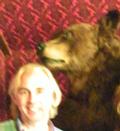Cited By
View all- Bernstein SDenny PLeinonen JKan LHellas ALittlefield MSarsa SMacneil SMonga MLonati VBarendsen ESheard JPaterson J(2024)"Like a Nesting Doll": Analyzing Recursion Analogies Generated by CS Students Using Large Language ModelsProceedings of the 2024 on Innovation and Technology in Computer Science Education V. 110.1145/3649217.3653533(122-128)Online publication date: 3-Jul-2024
- Mazumder SPérez Quiñones MStephenson BStone JBattestilli LRebelsky SShoop L(2024)The Correctness of the Mental Model of Arrays After Instruction for CS1 StudentsProceedings of the 55th ACM Technical Symposium on Computer Science Education V. 110.1145/3626252.3630943(806-811)Online publication date: 7-Mar-2024
- Selva MBroquedis FStephenson BStone JBattestilli LRebelsky SShoop L(2024)Mining Jewels Together: Debating about Programming Threshold Concepts in Large ClassesProceedings of the 55th ACM Technical Symposium on Computer Science Education V. 110.1145/3626252.3630893(1189-1195)Online publication date: 7-Mar-2024
- Show More Cited By


